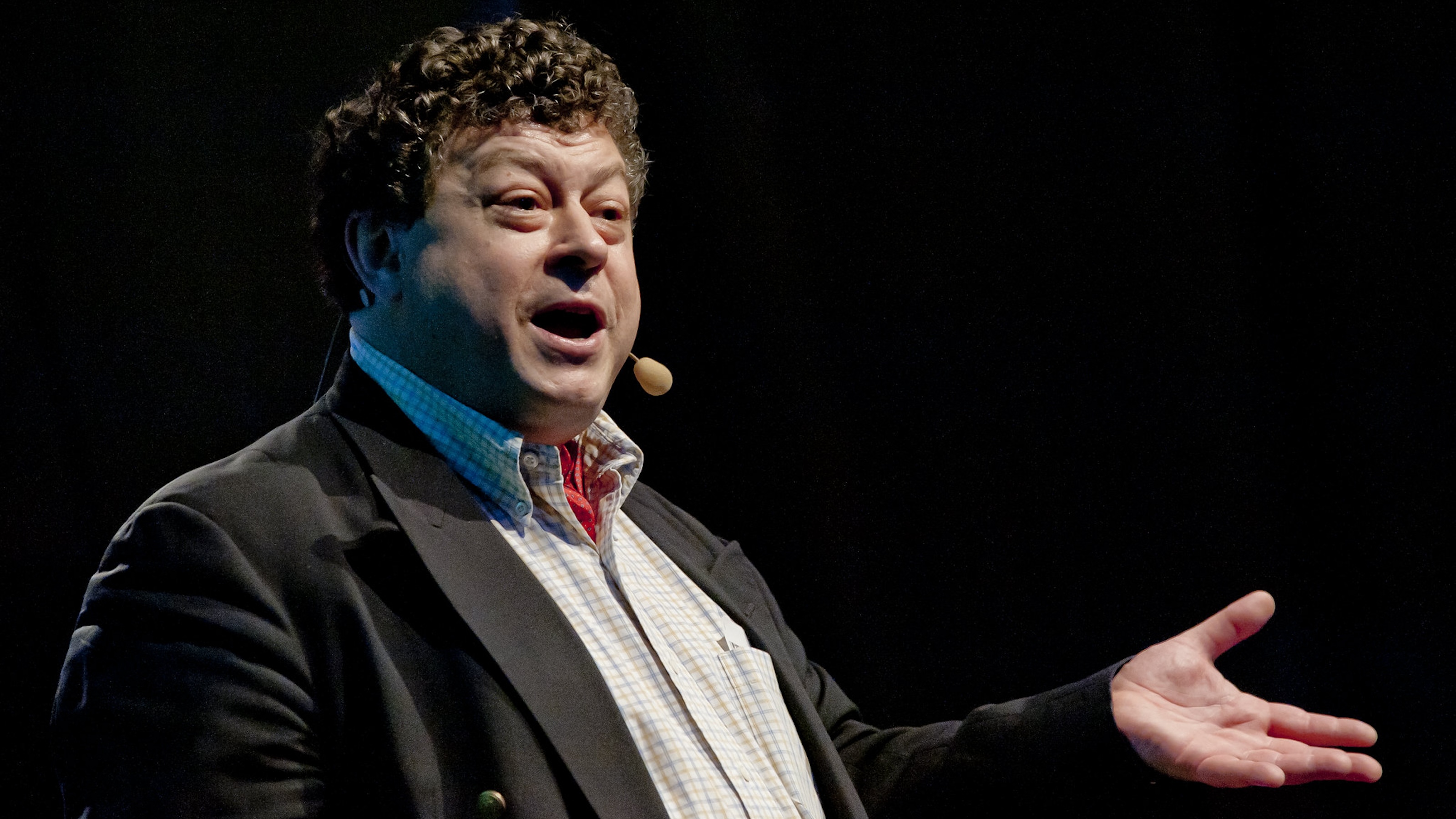Growing food indoors is not a new concept, and Dickson Despommier says global climate change will require that we re-examine it.
Dickson Despommier: Let
me give you some history first about growing food indoors. So back in
the 1930s some agronomists in the United States and in Europe also,
sensing a need for an alternate way of growing food learn that plants
will actually grow without soil. If you supply the right nutrition in a
water environment, so the term hydroponics came into vogue then. During
the Second World War hydroponics played a big role in the South
Pacific. The Japanese were busy torpedoing our supply ships from
California laden with food, and all of a sudden they said look, we’re
going to have to grow food here, and what’s the best way to do it?
Believe it or not we raised 8,000 tons of food hydroponically during
the Second World War to feed our troops. The moment the war ended, we
said okay, back to business as usual. Let’s just go back and plant and
harvest and live a good life. And you know the post-war era of United
States’ history, the industrial complex took over. The Eisenhower era
came in. Everybody looked like they were living in the land of milk and
honey. We had huge immigrations in this country. All the people that
lived in the Midwest that migrated to the west coast during the ‘30s
because of the crop failures in the Midwest, and this big dust bowl
abandoned all of that for California. So you’ve read Grapes of Wrath.
I’m sure everybody else has too, right? We’ve seen the movie. By the
way, I show the movie to my students and no one recognizes any of the
actors, and I said “That’s Bridgette Fonda’s father [sic] you’re
looking at.” And they can’t believe that. They know who Bridgette Fonda
is though. They don’t even know who Peter Fonda is. I have to show them
Easy Rider to get them on track again. But okay, so the idea is that we
spoil the Midwest by over farming in a place that farming shouldn’t
have occurred. We then move west, and now we’re over farming in a place
where farming shouldn’t occur either, and that is the Imperial Valley.
Without irrigation and fertilizers and pesticides farming is impossible
in that area, but because of the second green revolution, we did it.
And now that’s about to fail. If you look at the Food and Agriculture
Organization’s predictions over the next ten years with regards to
world crop production, the yield, the annual yield will drop by 20
percent. That’s a worldwide prediction based on rapid climate change,
which is of course the part of the equation that we’re all worried
about but don’t know what to do anything about, right? So you know, try
teaching this to college students and they’ll start throwing rotten
tomatoes at you at the end because they don’t want to hear anymore bad
news. They’ve got so much bad news and they’re thinking about getting a
job, and what the hell’s the use in working when the whole world is
going to collapse around you, right? So I have to give them something
positive to cling to, so this is how vertical farming, the concept of
urban farming actually arose, and it arose in my class about ten years
ago. I asked the class okay, okay, enough gloom and doom. Let’s think
about something positive. What would you like to work on for the next
half of the semester? As a group without my interference, you pick a
project. I’ll support it. I’ll tell you where to go for references if
you need my advice, but mostly you’re on your own and I would like you
to write it up at the end. And so they came back to me the next class
and they said, you know, we think rooftop gardening would be a good
idea. Here’s something local we can do that has global implications,
and people are doing it now also. Let’s see how many people we can
feed. If we just took Manhattan and said how many people do you think
we can feed raising food on the rooftops of Manhattan and not the
commercial buildings, just the apartment complexes? Okay, so, they had
to go to the Map Room at 42nd Street and this is a huge-- this is
before we had Google Earth. This is the hardcopy Google Earth version
of Manhattan. So you go to this map room and there are these huge
leather-bound books. I mean it takes two people to turn a page. But the
architectural footprint of the building is right there, and it’s all to
scale. And so you can compute how many acres of rooftop garden you
have, and that took them three weeks. And they determined that there
are 13 acres of rooftop. That was in around the year 2000. Okay, I said
“You’ve got 13 acres of farmland. Now what are you going to grow?” And
you know, back to the drawing board, right? So they had to look up the
most energetically yielding crop, and that turned out to be rice.
Wasn’t a surprise because half of the world eats rice as their main
staple. Growing rice on the rooftops of New York, Manhattan would feed
two percent of the population of Manhattan. Again, they got out their
rotten tomatoes and almost-- they really wanted to crucify me at this
point because, you know, I put them through all these hoops. I made
them jump through every hoop possible, so to behave as a group to come
up with an answer to any question it didn’t matter what the question
was. It mattered how you got the answer. Alright, it matter how you got
it, not what the answer was. So at the end I tried to mollify them by
saying “Look, okay, so you can’t grow a lot of food on the rooftops.
What about all those apartment buildings that are abandoned? What about
all those empty lots? What about Floyd Bennett Air Force Base? What
about the fact that we might be getting Governor’s Island back? That’s
all within the city limits of New York City?” I said “Imagine how much
food we could grow if we just stuck it inside buildings. Class
dismissed.” And I’m not joking. That’s exactly how it happened. I got a
little hysterical thinking about it. I said “This is crazy,” you know?
But I’m married to a woman who grew up in the Bronx, so as I’m driving
her to work everyday at St. Vincent’s Midtown Hospital where she used
to work by the way that’s no longer a hospital, she started to ask me
“What do you mean by indoor farming? What are the possibilities here?”
And as I talked to her and of course I’d go on the Internet and
download some stuff on hydroponics.
Recorded on: 6/10/08





